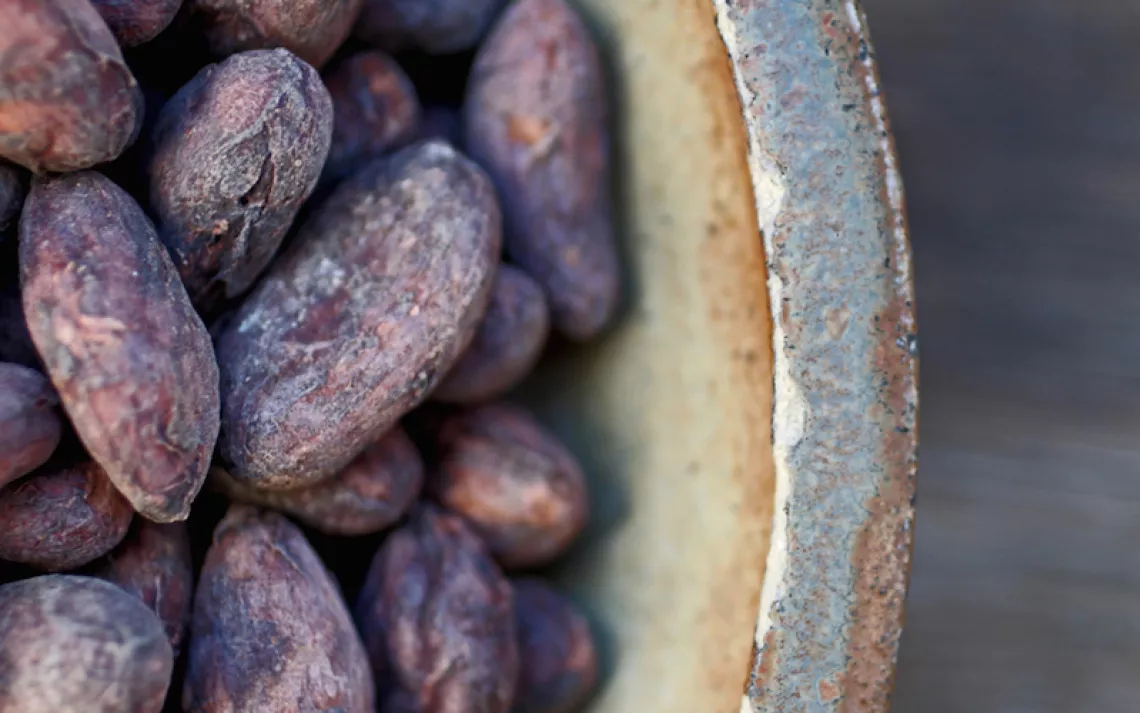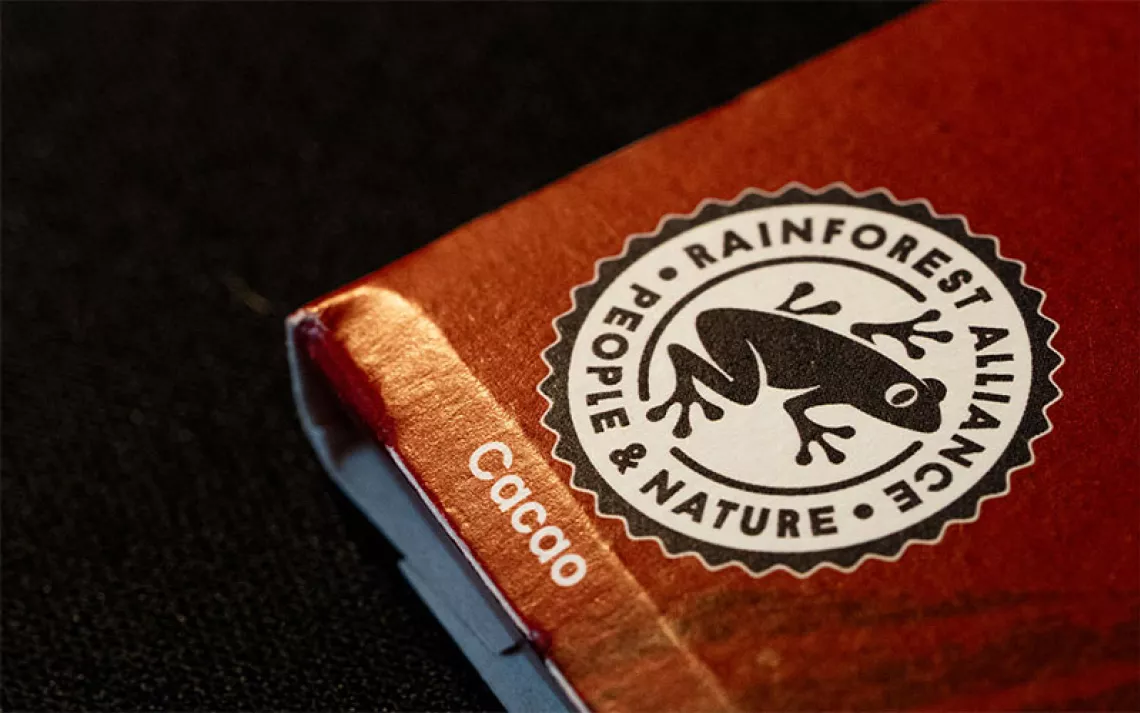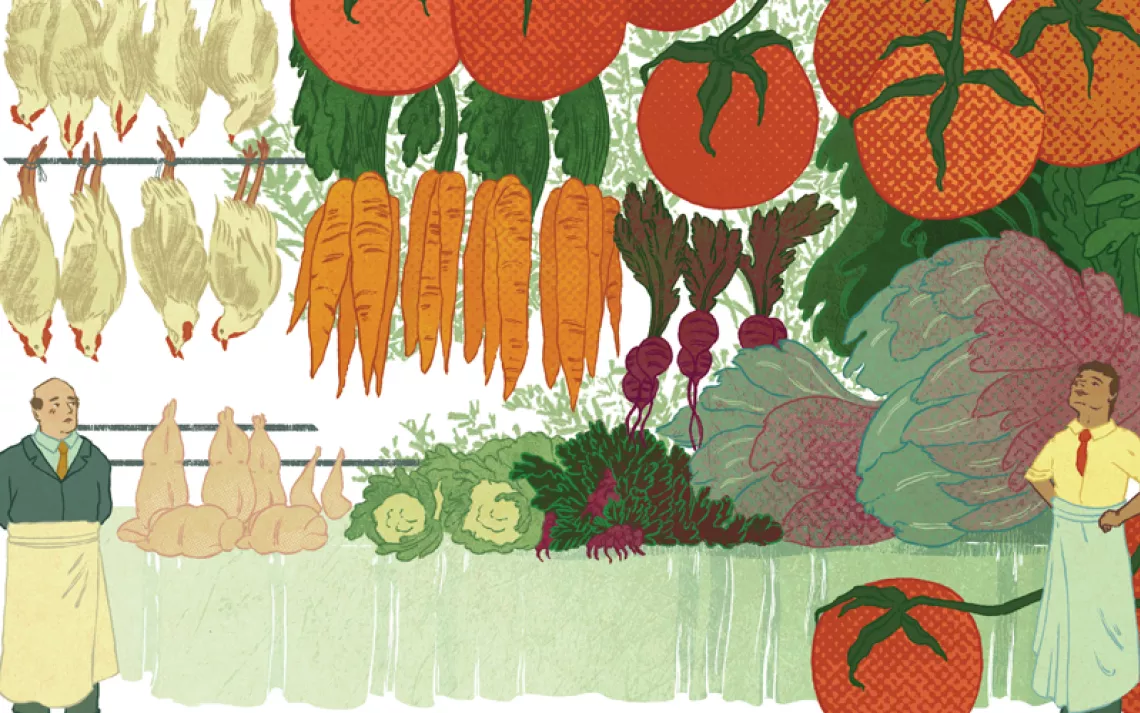Taste Test: To Save Cacao, Eat Craft Chocolate
Fete National Chocolate Day with seven bean-to-bar treats
Cacao—the football-shaped, equatorial-grown fruit that’s the prime precursor to chocolate—has captivated humans for centuries. First cultivated in Central and South America, the beans were fermented, roasted, and used as both food and medicine by the Olmec, Maya, and Aztec long before their export to Europe in the mid-1500s. These days, Americans eat more than 11 pounds of chocolate per person per year, using the sweet treat to celebrate love, soothe broken hearts, and indulge.
Whether you’re reaching for Halloween candy, ice cream, fancy bars, or mousse, know that chocolate all comes from the same source: the cacao tree, also known as Theobroma cacao. The cocoa beans within the cacao pods that grow on these trees originate primarily in West Africa and Latin America. Unfortunately, cacao farming—and the constant demand for chocolate—is a prime culprit causing much of the deforestation ravaging West African rainforests. That’s because many cacao farmers make room for more trees by cutting other types down in the rainforest, destroying the habitats of primates and other species, and eroding the soil. That’s why today makes for a great excuse to celebrate those chocolatiers doing their part to keep cacao environmentally friendly and fair trade.
With three times as many flavor compounds as red wine, chocolate is one of the most complex foods we consume. To start, Theobroma cacao is a diverse plant. Originally the plant is classified into three categories (Criollo, Forastero, and Trinitario), a 2008 study identified 10 distinct, regionally linked genetic clusters. Beyond genes, chocolate’s taste is shaped by terroir (the yeasts and bacteria in the environment in which it ferments) and chocolatiers’ tools and methods.
Commercial chocolate makers in the United States often sacrifice the treat’s inherent complexity in the pursuit of “signature” flavors and large-scale production. Bean-to-bar producers, however, tend to have broader motivations. “We can choose a set of things we value,” says Nuance Chocolate’s Toby Gadd. With the bean-to-bar crowd, those values typically translate into responsible sourcing, ethical trade, and high-quality products that showcase the diversity the beans have to offer. In honor of National Chocolate Day, we taste-tested ethical chocolates far and wide. Here are seven among the most delicious chocolate bars being crafted.
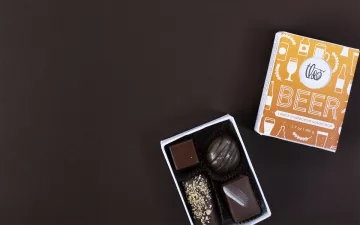
Founded in Seattle in 2006, Theo Chocolate was North America’ first organic, fair-trade-certified chocolate maker. Twelve years later, the company’s bars and confections are available in specialty grocery stores and online. When it comes to sourcing, Theo pays “high and stable prices” to cacao growers and invests in agricultural training on biodiversity, water-thrifty irrigation, deforestation prevention, and more. Back home, Theo partners with local organizations to craft limited-edition products that highlight local flavors and benefit the community.
To get a sense for the chocolate—sourced primarily from the Democratic Republic of the Congo and Peru—start with the Classic line. Both milk and dark versions of the salted almond bar are top sellers, but Theo offers tastes for every palate, from bars spiced with turmeric to single-serving peanut butter cups.
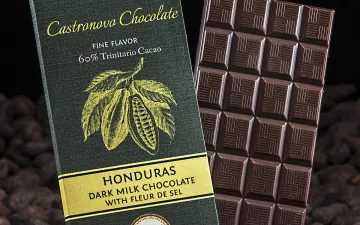
The chocolatiers behind Stuart, Florida’s Castronovo Chocolate have two passions that set their product apart: wild-grown rainforest cacao and dark milk chocolate. To preserve heirloom varieties of cacao, Castronovo selects fruits grown under rainforest canopies throughout Central and South America. By using a direct-trade model, they are able to ensure that the mostly Indigenous farmers growing their cacao are paid a fair wage.
Castronovo’s commitment to single-origin dark milk chocolate proves that not all milk chocolate tastes the same. Sierra Nevada Dark Milk 63%—made with cacao grown at 3,000 to 6,000 feet in the mountains along Colombia’s Caribbean coast—has won 12 awards in the last four years. Other choice treats include the white chocolate with lemon oil & lemon salt, and Honduras Lost City 72%, sourced from cacao grown in a remote virgin rainforest.
Baltimore-based Charm School Chocolate takes a broad approach to sustainability. In addition to buying from growers with thorough reforestation plans, the company challenges the notion that dairy is an essential ingredient in quality chocolate.
While Charm School offers several excellent dark bars, their dairy-free “milk” collections are favorites among vegans and have garnered the company several Good Food and International awards. For the perfect introduction, try the coconut milk chocolate or vanilla bean white.
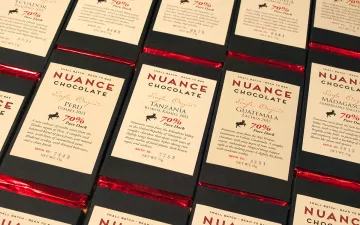
Nuance Chocolate boasts the nation’s largest selection of single-origin chocolate, with bars featuring cacao from 24 distinct countries and co-ops. This variety means the Fort Collins, Colorado–based company is constantly experimenting with methods and recipes to elicit each bean’s unique characteristics. In addition to selecting from the top 5 percent of beans from around the world, co-founder Toby Gadd strives to work with ethical growers who are committed to preserving and replanting the forests in which cacao thrives.
To get a sense of Nuance’s wide range of flavors, start by sampling the slightly acidic and bitter Trinidad & Tobago bar. Got a more adventurous palate? You’ll enjoy the bright, complex acidity of Madagascar. Nuance also sells milk and white bars as well as a wide selection of truffles—many flavored with local ingredients.
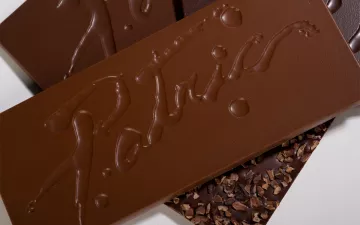
Patric Chocolate takes a comprehensive approach to sustainability. In addition to responsible cacao-sourcing, the Columbia, Missouri–based maker uses all non-GMO (and, whenever possible, certified organic) ingredients—from milk to candied ginger to peanut butter. To minimize its carbon footprint, Patric recycles and composts waste, uses recycled packaging, and participates in a local solar power program.
Patric Chocolate's bars have won more Good Food awards than any other producer of fine foods in the United States. To sample their bars—all available as rotating monthly releases—sign up for their newsletter or check back at their online store.
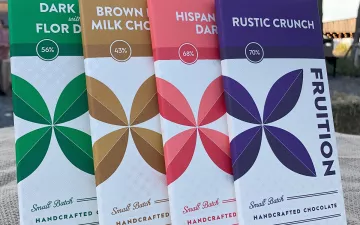
At Shokan, New York’s Fruition Chocolate, owner and co-founder Bryan Graham draws on his background as a baker and pastry chef to craft fine chocolates and creative confections. Fruition purchases wet cacao directly from growers and through ethical distributors at premium prices. To enhance quality control, Graham then ferments and dries the beans locally.
To get a taste of what this maker has to offer, dig into the creamy richness of brown butter milk chocolate, embrace the purity of the 100% bar (no sugar in this one!), or go for something in between with the Hispaniola Dark. Beyond the bars, Fruition’s pecans with maple cinnamon milk chocolate make for the perfect gift or after-dinner treat.
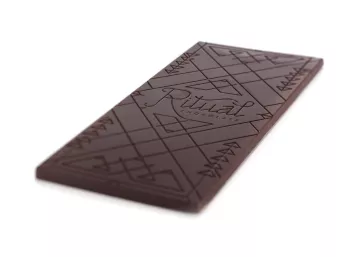
Since 2010, Ritual Chocolate has been transforming cacao into chocolate using old-school methods—including a three-roll mill and 100-year-old longitudinal conche to refine, mix, and grind the beans. Based in Park City, Utah, at approximately 7,000 feet, the maker specializes in extremely fine dark chocolate, eschews dairy in all of its products, and purchases its organic cacao from farmers who earn four to six times the industry norm.
Tasting the single-origin bars back to back will highlight differences between beans, but flavored varieties are also popular. Some of Ritual’s best-selling bars include Fleur de Sel Sea Salt 70%, Mid Mountain Blend 70%, Bourbon Barrel Aged 75%, and Vanilla 70%.
 The Magazine of The Sierra Club
The Magazine of The Sierra Club
